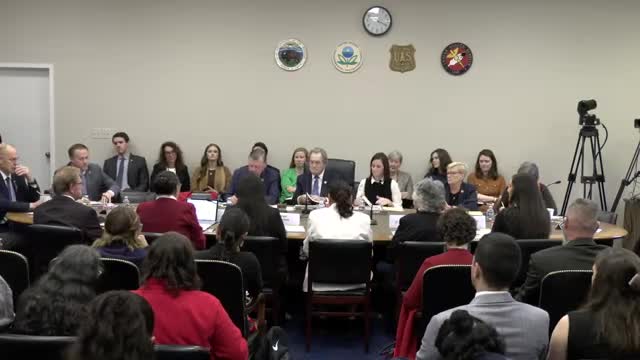Navajo Nation faces crisis with 75 missing relatives amid jurisdictional and resource challenges
This article was created by AI summarizing key points discussed. AI makes mistakes, so for full details and context, please refer to the video of the full meeting. Please report any errors so we can fix them. Report an error »

During a recent oversight hearing on the crisis of missing and murdered Indigenous women, the U.S. House Committee on Appropriations highlighted the urgent need for improved resources and communication within the Navajo Nation. The testimony revealed that as of now, there are 75 known missing Dine relatives, with the number of murdered individuals remaining unaccounted for due to insufficient tracking capabilities and a lack of infrastructure.
Witnesses emphasized the significant jurisdictional challenges that hinder effective law enforcement responses. Many cases are inadequately handled due to unclear lines of authority between local and tribal law enforcement, leading to delays and unresolved cases. For instance, the tragic story of Zachariah Juwan Shorty, who was found dead shortly after being reported missing, underscored the dire consequences of these jurisdictional issues. His mother, Vanjie Randall, expressed her frustration over the lack of communication between law enforcement agencies, which contributed to the mishandling of her son's case.
The hearing also addressed the critical shortage of law enforcement personnel on the Navajo Nation, which spans over 27,000 square miles and serves approximately 400,000 registered Navajo citizens. Currently, the Nation has only 218 law enforcement officers, far below the national average needed to ensure adequate public safety. This shortage extends to criminal investigators, with only 32 available to handle a wide range of cases, including those that fall under the Major Crimes Act.
To combat these challenges, the Navajo Nation has proposed a two-year funding initiative aimed at establishing a medical legal death investigation system. If approved, this would allow the Nation to hire dedicated coroners and a medical examiner, enabling investigators to focus more on major crimes, including those related to missing and murdered individuals.
The hearing underscored the pressing need for enhanced support and resources to address the crisis of missing and murdered Indigenous women, with a clear call for action to improve communication, jurisdictional clarity, and law enforcement capabilities within the Navajo Nation. As the community continues to advocate for justice, the implications of these discussions could lead to significant changes in how cases are managed and resolved in the future.
Witnesses emphasized the significant jurisdictional challenges that hinder effective law enforcement responses. Many cases are inadequately handled due to unclear lines of authority between local and tribal law enforcement, leading to delays and unresolved cases. For instance, the tragic story of Zachariah Juwan Shorty, who was found dead shortly after being reported missing, underscored the dire consequences of these jurisdictional issues. His mother, Vanjie Randall, expressed her frustration over the lack of communication between law enforcement agencies, which contributed to the mishandling of her son's case.
The hearing also addressed the critical shortage of law enforcement personnel on the Navajo Nation, which spans over 27,000 square miles and serves approximately 400,000 registered Navajo citizens. Currently, the Nation has only 218 law enforcement officers, far below the national average needed to ensure adequate public safety. This shortage extends to criminal investigators, with only 32 available to handle a wide range of cases, including those that fall under the Major Crimes Act.
To combat these challenges, the Navajo Nation has proposed a two-year funding initiative aimed at establishing a medical legal death investigation system. If approved, this would allow the Nation to hire dedicated coroners and a medical examiner, enabling investigators to focus more on major crimes, including those related to missing and murdered individuals.
The hearing underscored the pressing need for enhanced support and resources to address the crisis of missing and murdered Indigenous women, with a clear call for action to improve communication, jurisdictional clarity, and law enforcement capabilities within the Navajo Nation. As the community continues to advocate for justice, the implications of these discussions could lead to significant changes in how cases are managed and resolved in the future.
View full meeting
This article is based on a recent meeting—watch the full video and explore the complete transcript for deeper insights into the discussion.
View full meeting